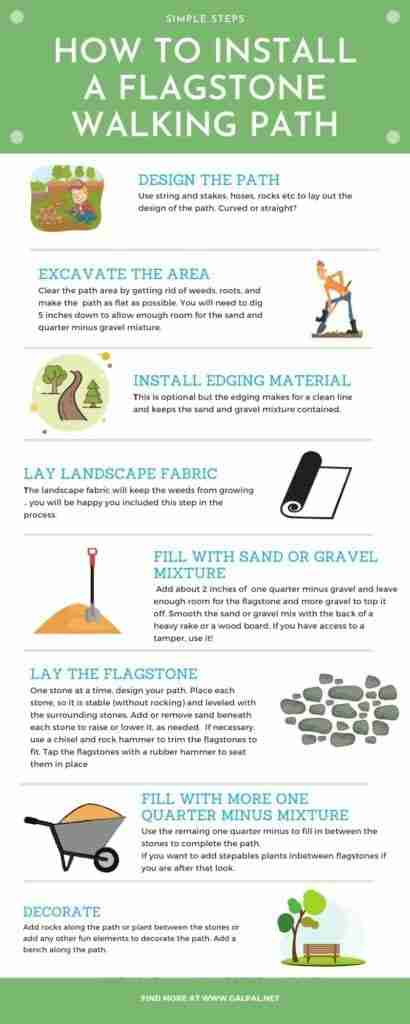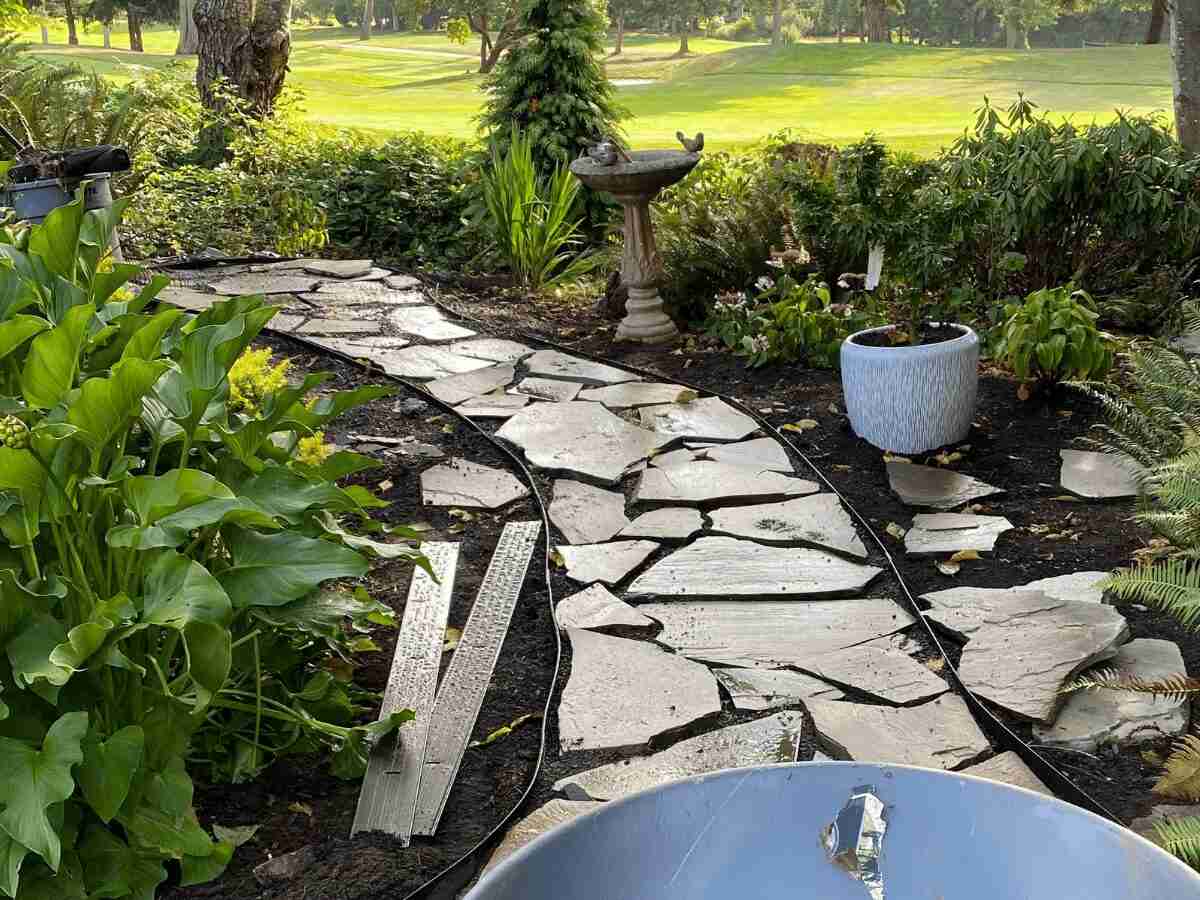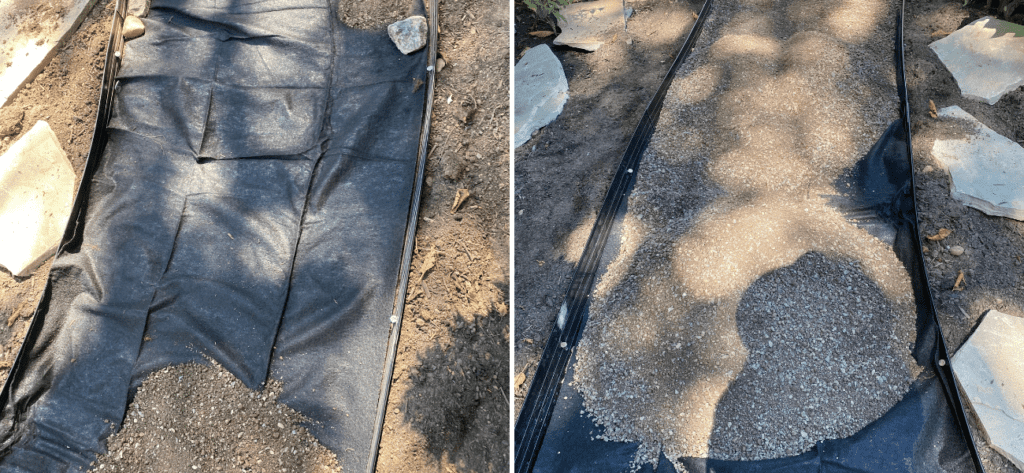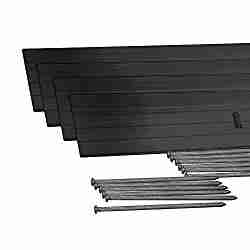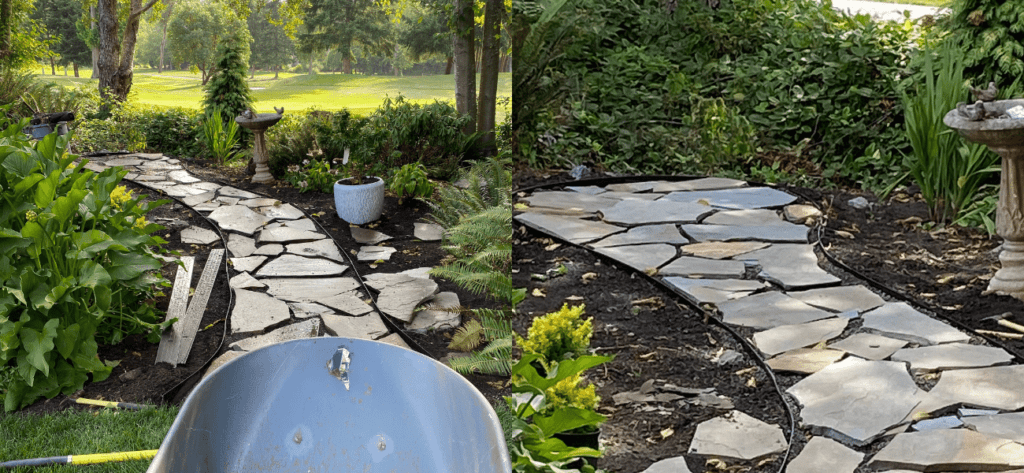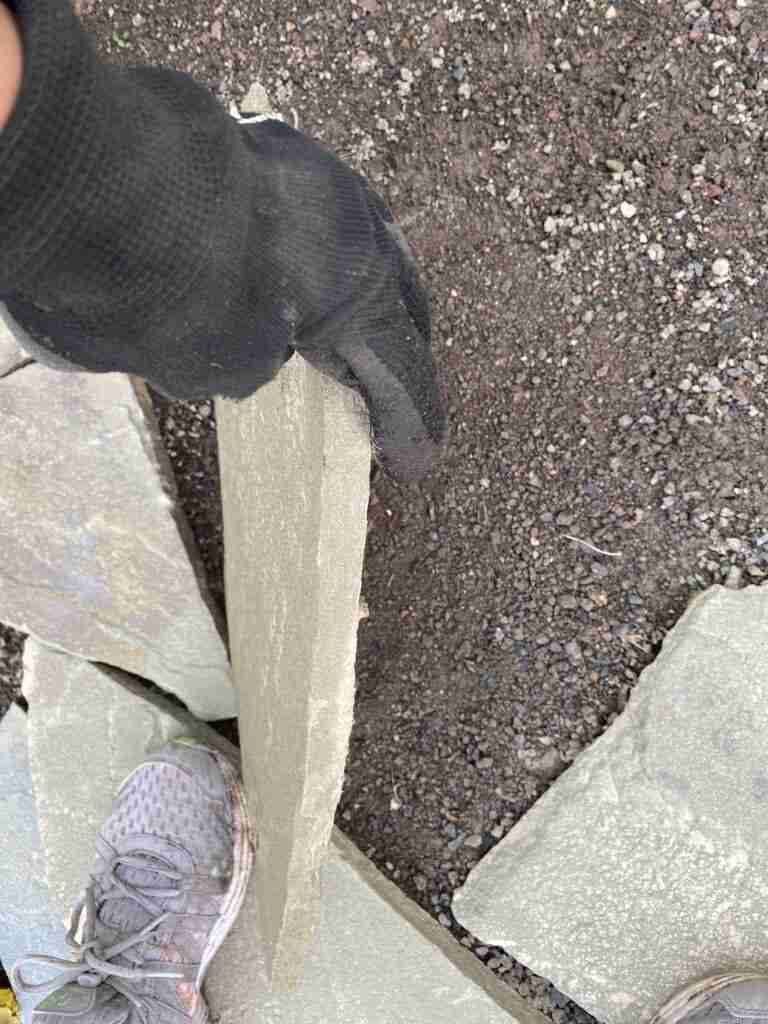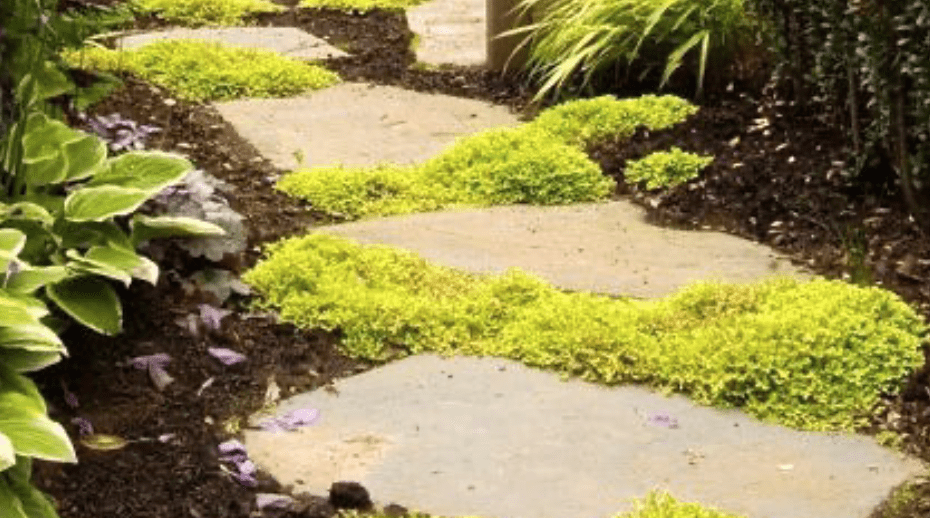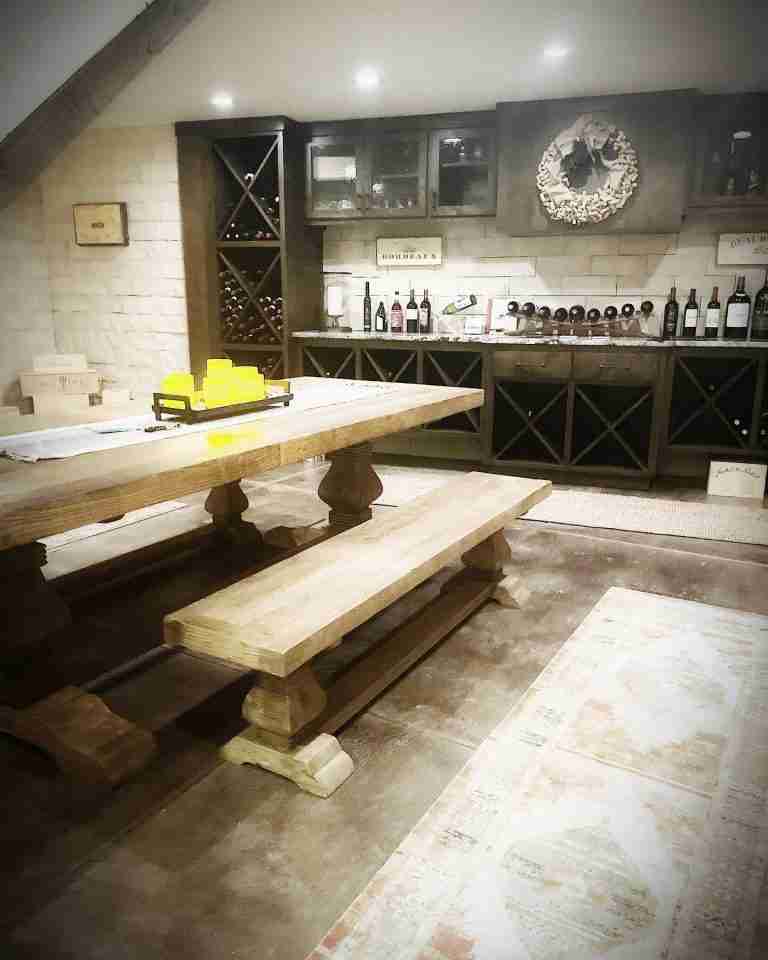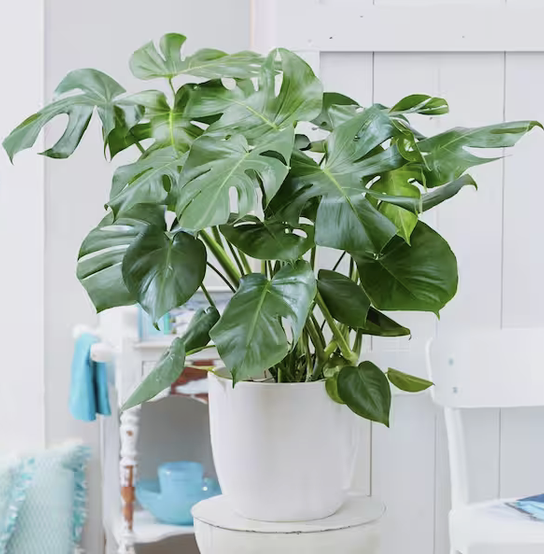How To Install A Flagstone Garden Path- In 8 Simple Steps
Add Interest and Romance To Your Garden With A Stepping Stone Path
As you may already know, I have really “digging” my gardening lately. Since I started with a clean slate, it’s been rewarding and fun (not to mention the workout) to see the landscape design and garden come to life.
Early on, I envisioned a curved garden path that would add a romantic mystery and a sense of purpose to my sweet teak garden bench. I have always appreciated a pretty flagstone pathways that takes you on a short journey through sunny shrubs and stunning perennials in the comfortable shade. My path was not designed for high foot traffic.
A winding or straight garden path made of natural stone offers a warm welcome to visitors in a garden or to the front door. There are so many garden pathway designs to explore.
Flagstone pavers installed in a random attractive pattern adds a fun texture to your outdoor oasis. When you mix larger stones with smaller ones offers lots of interest in a informal design type of way. For my garden path, I wanted the flagstone walkway to have a rustic look and feel. There are many ways to update your landscape with a garden path.
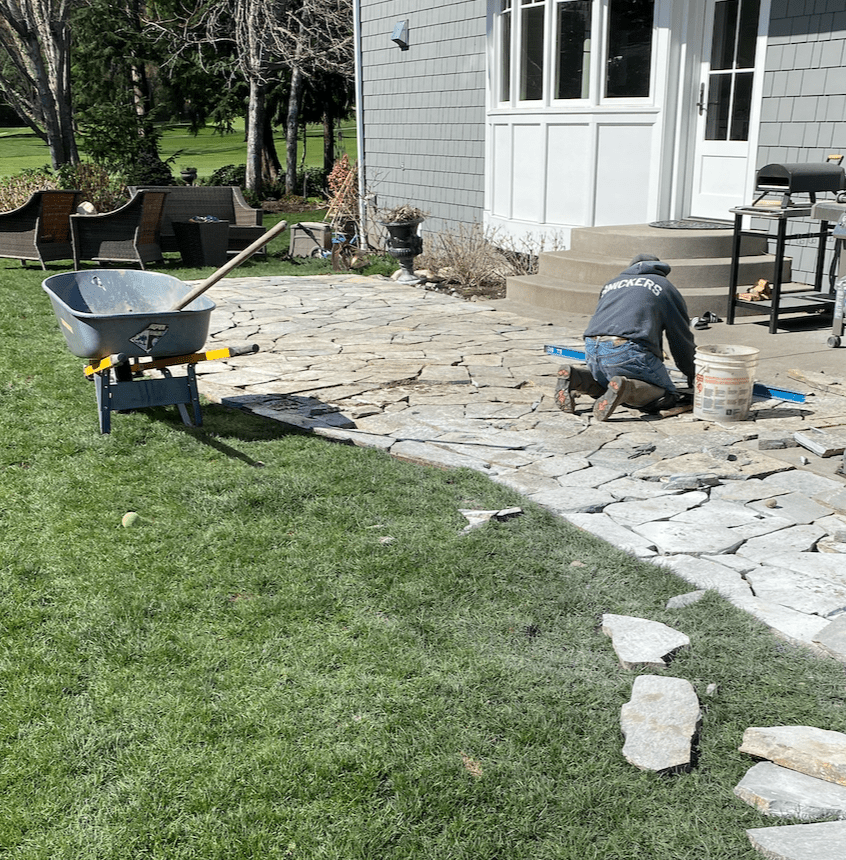
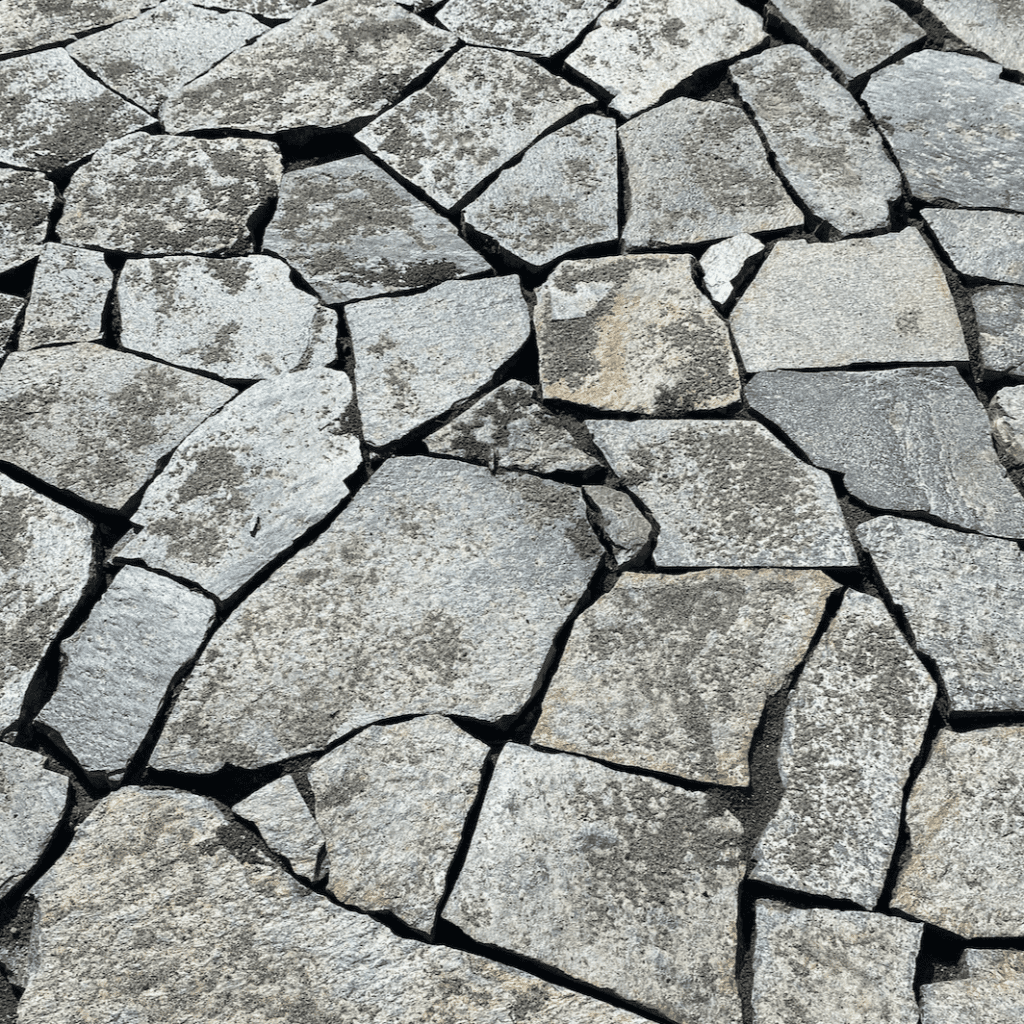
Installing A Flagstone Path
I am sharing how I installed a flagstone stepping stone path in eight simple steps. It is not as difficult as it looks, I promise!
How To Lay A Flagstone Pathway
A flagstone patio requires a strong foundation. You will need to install a concrete slab for the patio base. This should be poured at least 24 inches deep. If you live in an area with freezing temperatures, you might consider adding a thermal barrier between the concrete and the ground.
The path I designed is a curved circular flagstone path from one side of the garden to the other. The garden bench is a stop along the way in full sun. Whether your garden is large or small, installing a path that curves can make the garden more interesting and prominent.
If you want to add interest and romance to your garden, adding a path is a simple can do just that! I wanted to use flagstone because it was more formal and matched our patio’s curved stone wall.
Choosing the type of stone
Choosing the type of stone for a walkway is simply a matter of taste. Just make sure the stone is thick enough so it won’t crack. To get the best price for flagstone, find locally available stone at garden centers or landscape suppliers. Stone is priced by weight, so choose pieces that are not too thick, it’s not necessary.
Flagstone Path Ideas
If you want to add interest and romance to your garden, adding a stepping stone path can do just that! I decided to use flagstone because it was more formal and matched our patio’s curved stone wall as opposed to using concrete slab or concrete pavers. When considering a path design consider the surrounding landscape design and layout.
Choosing the type of stone for a walkway is simply a matter of taste. Just make sure the stone is thick enough so it won’t crack. To get the best price for flagstone, find locally available stone a garden centers or landscape suppliers. Stone is priced by weight, so choose pieces that are not too thick, it’s not necessary.
The Equipment You Need To Build The Path
Equipment / Tools
• Stakes and string or 2 garden hoses
• Flat spade
• Shovel
• Wheelbarrow
• Hand tamp
• Rubber mallet or hammer (as needed for edging) or sledge hammer
• Scrap 2×4 board (not necessary but helps flatten the sand-gravel mix)
• Carpenter’s level (not necessary but is helpful)
Materials
• Edging material (optional) metal or vinyl garden border
• Landscape fabric (weed barrier) and staples
• Quarter Minus gravel and a bed of sand or consider using crushed oyster shell because it contains oyster flour and compacts well.
• Large, flat stones
• Gravel, potting mix, plants (optional)
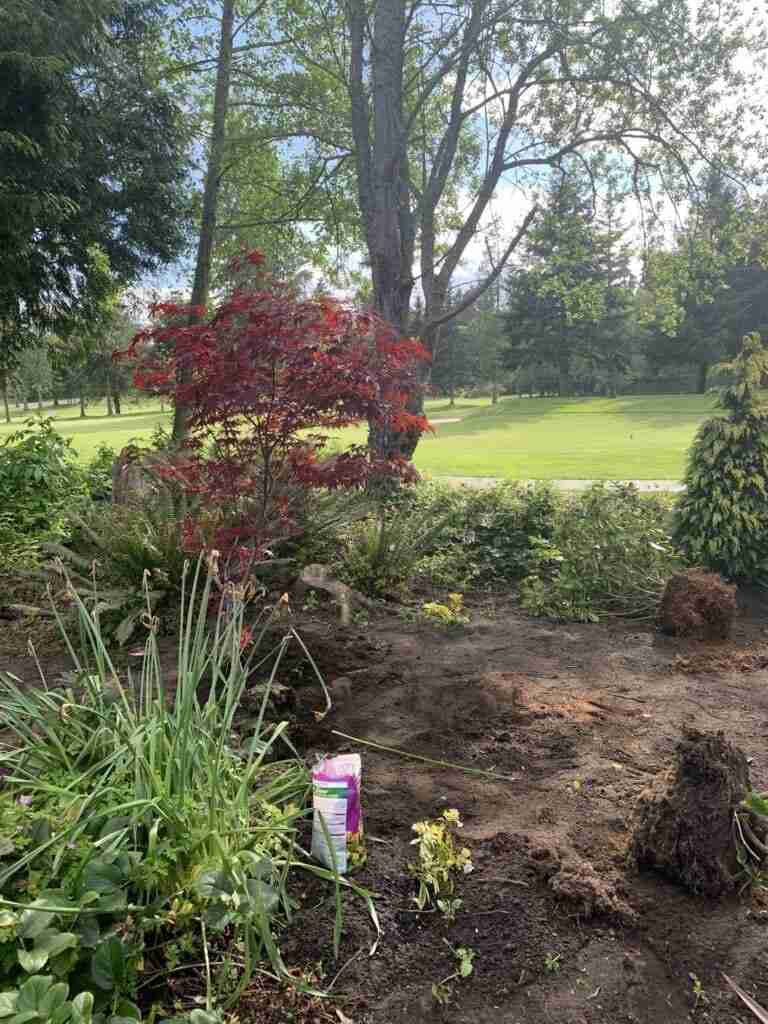

This what the garden looked like before the path

1. Lay Out The Design Of The Path
I used string and rocks to play with the curve of the walkway. You may also use a garden hose. Depending on how long your path is, you can use stakes and tie string to each stake.
Since we were designing a rustic garden path, the path didn’t have to be too wide. If you are designing a high traffic area path, you will need enough room for two people to pass each other along the path. Make your own diy flagstone walkway with your own layout design
2. Excavate The Path
My son used a shovel and spade to cut the area for the path. If you are laying the way grass is planted, you will want to use a sod cutter to remove grass and vegetation.
Jake and I removed weeds and cut through roots to achieve a depth of 4-5 inches. It doesn’t have to be perfectly flat because you can use the quarter minus 5 inches (coarse sand or pea stone works).
It doesn’t have to be perfectly flat because you can use the crushed rock and then masonry sand to level out the ground and make it as smooth as possible. A plate hand tamper is the ideal tool to create a smooth flat surface. Make sure you watch for any irrigation lines when you are cutting through the vegetation.
3. Install Edging (optional)
The next step is to install edging along the path. This is not necessary, but we wanted to keep the walkway tidy. The outside edge will hold the bed or mortar and natural stones providing an ideal walkway base.
I used the following edging material on Amazon. The galvanized metal was stiff enough to bend but firm enough to keep the gravel filler in place.The metal edging is installed with stakes. A hammer or sledge hammer works well to drive the stakes into the ground.
BUY HERE ON ON AMAZON- This is the edging material I used.
4. Lay Landscape Fabric
Lay landscape the fabric over the soil along the entire path. In areas where weeds like to grow, I used two layers of the landscape fabric. We secured the layer of landscape fabric with ground steel stakes.
5. Add Sand/Qtr Inch Gravel And Layer
Add one- quarter inch gravel (it’s part sand and gravel) or sand between edging or sides of the cut path. Add approximately 2 inches over the landscape fabric. Smooth the sand or gravel mix with the back of a heavy rake or a wood board. If you have access to a tamper, use it! The idea is to create a level surface
Spray the path with a mist of water to help the filler compact before setting the stones.
6. The Stone Design
This is the fun part. I found it helpful to lay the stone near the path to see the sizes and shapes as you start to put the stone puzzle piece together. You will want to Alternate large and small stones and different shapes and colors for a natural, random look.
This is much easier than I thought it would be. How to set flagstone?
7. Install The Stones- The DYI flagstone patio
Begin placing stones into the sand bed of the walkway, fitting them together as for your desired pattern. Leave small gaps between stones if you fill the gaps with sand or gravel; leave wider gaps (about 2 inches) if you plant between the rocks.
Try to use use flagstone pieces that are the same thickness. For informal designs, mix the larger stone with smaller stones (it’s a true jigsaw puzzle) to keep it an interesting tight fit.
The key is to place each stone, so it is stable (without rocking) and leveled with the surrounding stones. Add or remove sand beneath each stone to raise or lower it, as needed. If necessary, use a chisel and rock hammer to trim the flagstones to fit. Tap the flagstones with a rubber hammer to seat them in place.
Fill the space between the flagstones with sand or one-quarter-inch gravel then sweep the loose gravel into the crevices between the stones. Spray the entire flagstone design with a fine mist of water to settle the sand or gravel. Add additional sand or gravel as needed to reach the height of the flagstone.
8. Plant And Or Decorate The Path
If you’re planting the walkway, fill the gaps with a potting soil mix, add “step-able” plants, such as wooly thyme, sedum, or bugleweed. Perhaps add rocks to line the path or? I used granite rocks on the edges of the path.
If you want to add some character to your garden- GO FOR IT! Trust me! I am so happy with the end result of my DYI project.
After we completed our garden path, we decided to transform a flagstone patio along the side of our house into a sitting area. With that project, we used large stones with a similar base material (gravel base).
We hired out this project on a square foot basis. The crew that installed the path and patio had professional power tools to create a smooth surface for our high traffic foot long path. I was happy not to do the heavy lifting!
If you can create a flagstone pathway, consider laying a flagstone patio. We added a new flagstone pathway as an extension to our flagstone path. A flagstone patio project may sound overwhelming it’s worth it. It makes an ideal outdoor living space.
Let me know how it goes! Send me a note or pictures
Best,

